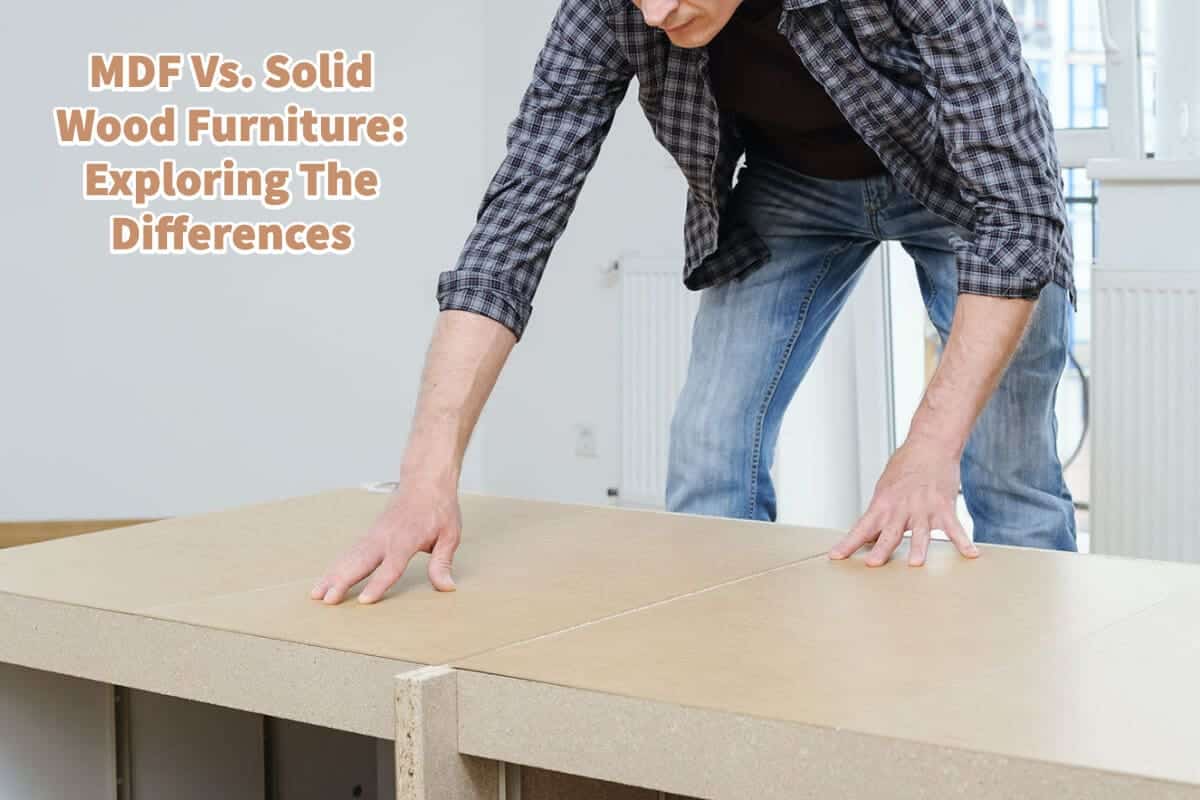When you want to manufacture or purchase MDF and Solid Wood Furniture, many people want to know the differences between these materials.
Solid wood is wood that is 100% natural or, in other words, wood that is cut down from the tree. Solid wood furniture has been around for centuries. MDF (Medium Density Fibreboard) is a material that was put into mass production in the 1970s, so as a material, it is relatively new. But despite this, it is a viral material in all kinds of furniture manufacturing and production.
Table of Contents
- Solid Wood Furniture: Exploring The Differences And Popularity Of MDF In Modern Furniture Design
- Solid Wood Furniture – The Epitome Of Natural Beauty Explored
- MDF – An Engineered Wood Marvel
- MDF’s Role In Furniture Production
- Veneer MDF Furniture Panels
- MDF Vs. Solid Wood Furniture – Pros And Cons
- MDF Furniture Pros And Cons Explored
- Solid Wood Furniture Pros And Cons Explored
- Making The Right Choice Between Solid Wood Vs. MDF
- Related Content
Solid Wood Furniture: Exploring The Differences And Popularity Of MDF In Modern Furniture Design
Deciding between MDF (Medium Density Fibreboard) and solid wood can be daunting when choosing furniture. Both materials have their unique characteristics, advantages, and historical significance.
Read on as we will delve into the dissimilarities between MDF and solid wood furniture, explore the history and uses of MDF in furniture production, and understand why MDF has become a popular material, particularly for veneer furniture panels.
Solid Wood Furniture – The Epitome Of Natural Beauty Explored
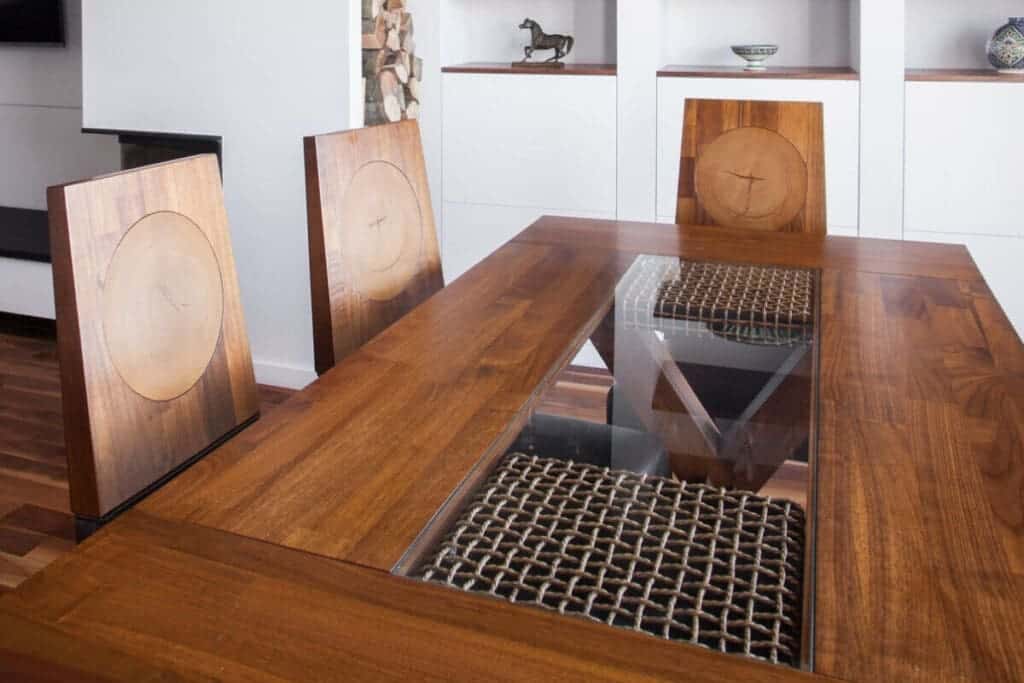
For solid wood furniture, for many people, it is the furniture they prefer or the furniture that will be found on many antiques. Here are some characteristics of solid wood furniture
Definition And Characteristics Of Solid Wood Furniture
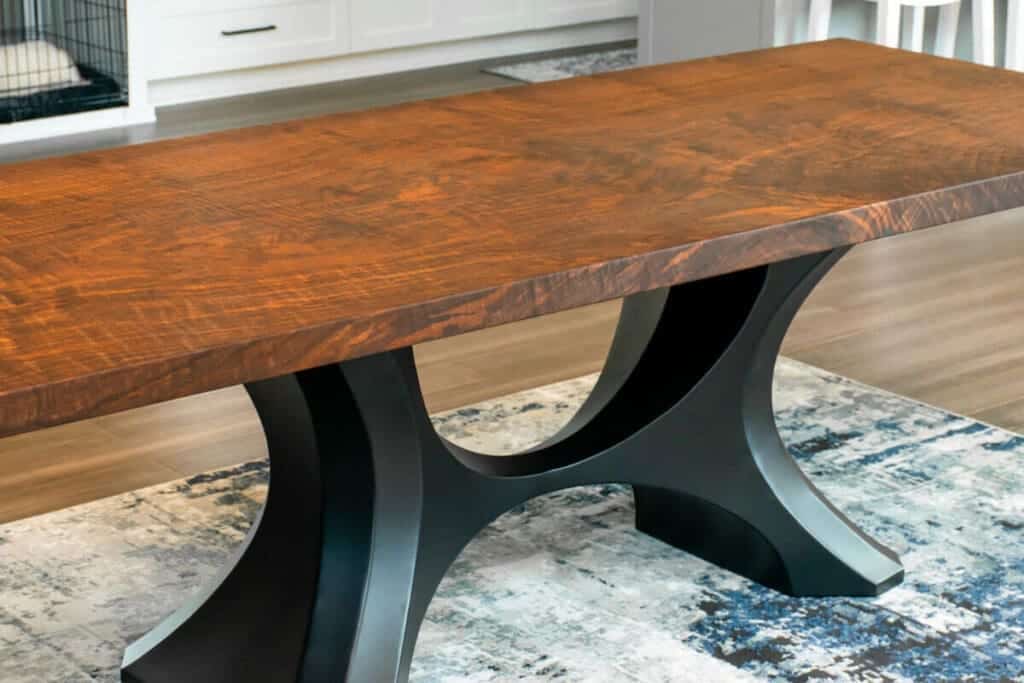
Solid wood furniture is crafted from natural timber, with each piece retaining its unique grain patterns, texture, and color. Solid wood is revered for its warmth, durability, and timeless appeal.
Historical Significance Of Solid Wood Furniture
Solid wood furniture has a rich heritage, deeply rooted in traditional craftsmanship and cultural significance. Solid wood has been the material of choice for furniture throughout history, embodying nature’s beauty and showcasing skilled artisans’ skills.
MDF – An Engineered Wood Marvel
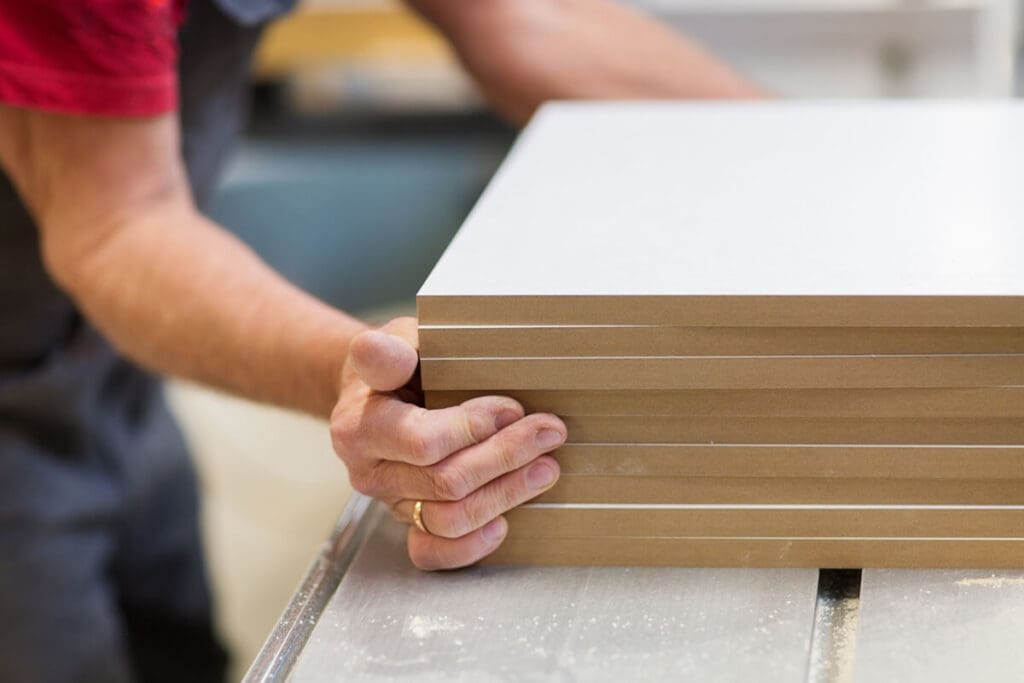
MDF: Medium Density Fibreboard (MDF) is an engineered wood product that combines wood fibers with a synthetic binder. It was first commercially produced in the United States in 1966 and later in Europe in 1973.
The Manufacturing Process For MDF Wood
There are 4 basic steps when MDF or Medium Density Fiber Board is produced. Here are the four basic steps.
- Wood Fiber Extraction
- Blending and Bonding
- Pressing and Shaping
- Finishing and Treatment
MDF’s Role In Furniture Production
Today MDF is an essential material for all kinds of furniture production. It is used a lot in all kinds of furniture production. Here are some reasons why it is used so much in furniture production today:
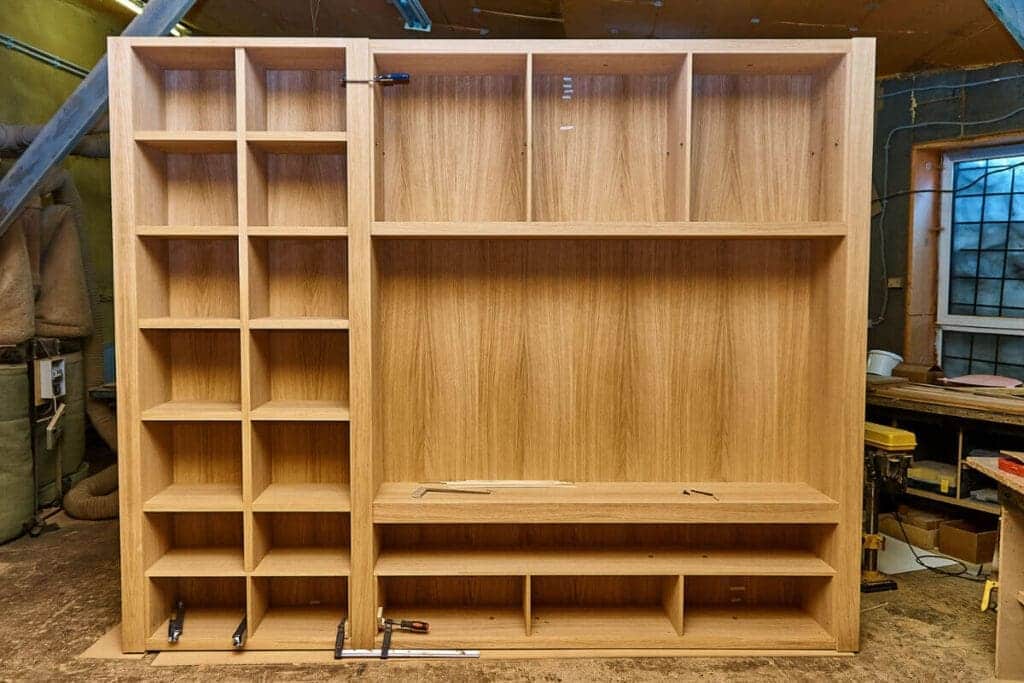
Versatility And Utility Of MDF
MDF’s composition and manufacturing process makes it a versatile material for furniture production, allowing for a wide range of shapes, sizes, and finishes.
- Enhanced Stability and Consistency: MDF’s uniform density and lack of natural defects make it highly stable, minimizing warping, splitting, or cracking.
- Smooth and Even Surface: MDF provides a flat and consistent surface, ideal for veneer application and achieving a seamless appearance.
- Machinability and Design Flexibility: MDF can be easily machined, shaped, and molded, allowing for intricate designs and creative furniture solutions.
Veneer MDF Furniture Panels
Veneer furniture panels, which feature a thin layer of high-quality wood glued onto a core material, often utilize MDF as the core substrate. Here are some reasons why Veneer MDF Furniture panels are used a lot in production.
- Cost-Effectiveness: MDF’s affordability compared to solid wood makes it an attractive option for veneered furniture, allowing the use of premium wood veneers at a lower cost.
- Stability and Resistance: MDF’s uniformity and resistance to warping make it an excellent choice for veneer application, ensuring that the veneer remains intact and pristine over time.
- Environmental Considerations: MDF, an engineered wood product, promotes sustainable forest management by utilizing wood fibers from fast-growing trees and minimizing waste.
MDF Vs. Solid Wood Furniture – Pros And Cons
Deciding between MDF and solid wood furniture is not always an easy choice. Many times using one other than another makes both economic and also structural sense.
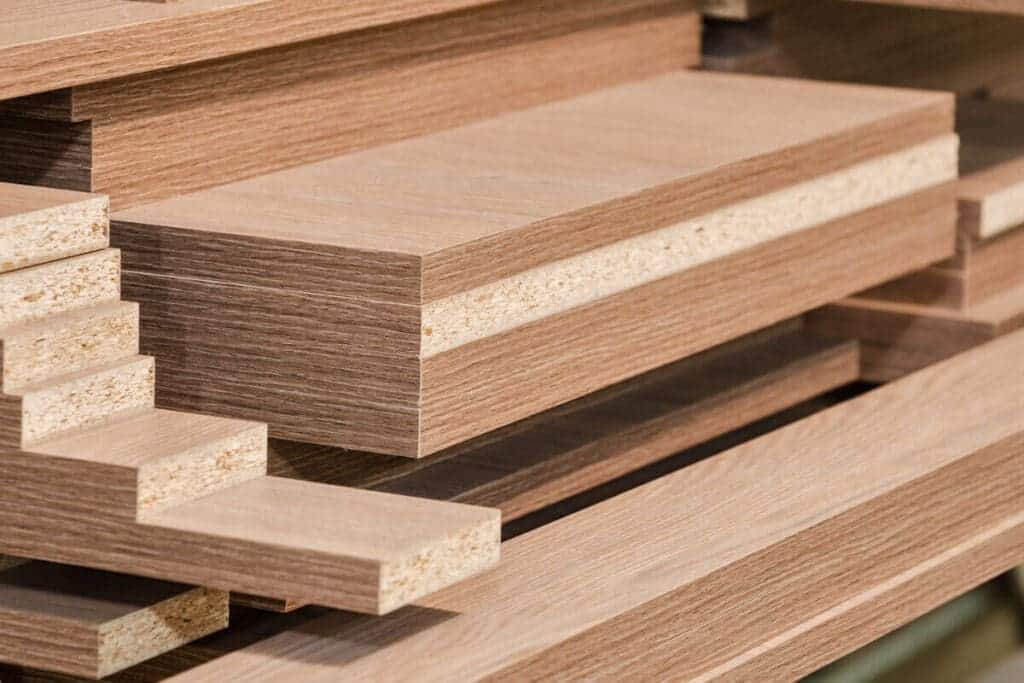
Here are some Pros and Cons of MDF.
MDF Furniture Pros And Cons Explored
MDF furniture offers several advantages and considerations. There are many instances why today you would use MDF Vs. Solid Wood. Here are some pros and cons of MDF furniture:
Pros Of MDF Furniture
Affordability: MDF is generally more budget-friendly than solid wood, making it accessible to a broader range of consumers.
Design Flexibility: MDF’s machinability and uniformity allow for intricate designs and precise detailing.
Stability and Resistance: MDF’s composition provides stability, resistance to warping, and a smooth surface ideal for painting and finishing.
Cons Of MDF Furniture
Durability: MDF is not as durable as solid wood and may be prone to damage from moisture and impact.
Limited Repairability: MDF is difficult to repair if it gets chipped or dented, as solid wood does not have the same storability.
Environmental Impact: MDF’s production process involves synthetic binders and may release formaldehyde emissions, raising environmental concerns.
Solid Wood Furniture Pros And Cons Explored
Solid wood furniture has its own set of advantages and considerations. Solid wood is the best choice for many kinds of furniture production. Here are some of the pros and cons of solid wood furniture.
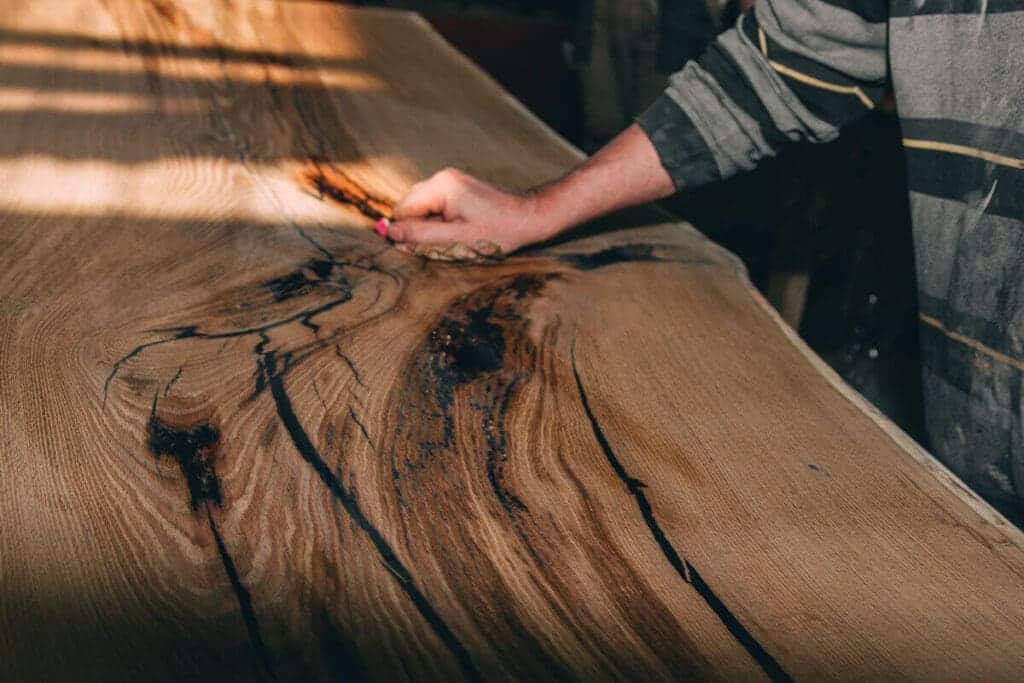
Pros Of Solid Wood Furniture
Natural Beauty and Character: Solid wood showcases unique grain patterns, textures, and color variations, creating a warm and inviting aesthetic.
Longevity and Durability: Solid wood furniture can last generations and withstand everyday use when properly cared for.
Restorability: Solid wood furniture can be easily repaired, refinished, or restored to its original glory, extending its lifespan.
Cons Of Solid Wood Furniture
Cost: Solid wood furniture is generally more expensive than MDF due to the higher cost of raw materials and craftsmanship.
Vulnerability to Environmental Factors: Solid wood furniture is susceptible to expansion, contraction, and warping when exposed to fluctuations in humidity and temperature.
Making The Right Choice Between Solid Wood Vs. MDF
You can consider several things when deciding between solid wood and MDF furniture. For most manufacturing today, depending on the furniture design, there is a combination between both solid wood and MDF furniture.
Here are some of the choices between solid wood and MDF.
Factors to Consider: When deciding between MDF and solid wood furniture, it is essential to consider various factors based on your needs, preferences, and budget.
Aesthetic Appeal: Determine the desired aesthetic, whether you prefer solid wood’s natural beauty or MDF’s versatility.
Budgetary Constraints: Evaluate your budget and find the right balance between cost and quality.
Intended Use and Durability Requirements: Consider the purpose of the furniture, the amount of wear and tear it will endure, and the desired lifespan.
Hybrid Options – Between Solid Wood And MDF Materials
Hybrid furniture options combine MDF and solid wood elements, offering a blend of affordability, stability, and aesthetic appeal. Most manufacturers will combine solid wood and MDF for many furniture designs.
The choice between MDF and solid wood furniture ultimately depends on personal preferences, budget, and specific requirements. Solid wood furniture exudes natural beauty, durability, and the ability to be restored over time.
On the other hand, MDF offers affordability, versatility, and a smooth surface ideal for veneer applications. Understanding materials’ characteristics, pros, and cons empower consumers to make informed decisions when selecting furniture that aligns with their style, budget, and functional needs.
Whether you opt for solid wood’s timeless elegance or MDF’s practicality, investing in quality craftsmanship and sustainable practices ensure that your furniture remains a cherished part of your home for years.
If you are interested in seeing how Mondoro can be a valuable partner for you for wood products – we would love to talk to you to see how we can help you.
Find out more about how Mondoro can help you create, develop, and manufacture excellent home decor and home furniture products – don’t hesitate to contact me, Anita. Check out my email by clicking here or become a part of our community and join our newsletter by clicking here.
Mondoro gives out a FREE Lookbook to anyone interested. You can receive a copy of our latest Lookbook by clicking here.
Listen to our Podcast called Global Trade Gal. You can find it on all major podcast platforms. Try out to listen to one of our podcasts by clicking here.
Subscribe to our Mondoro Company Limited YouTube Channel filled with great videos and information by clicking here.
Related Content
Hardwood Solids Furniture, What Does The Term Mean?
Hardwood solids can include non-solid woods as engineered woods. Hardwood solids are used in furniture and other industries to classify what kind of wood is used in a product. The terms usually do not classify what type of wood is used.
You can discover more by reading Hardwood Solids Furniture, What Does The Term Mean? by clicking here.
What Are Things To Consider When Finding A Solid Wood Manufacture to Manufacture Your Products?
One of the things we look at when we go into a new solid wood furniture manufacturer is in-house kiln wood drying. We also like to know if they understand how to properly join the wood and have the equipment to do it. Also, if the manufacturer is in a hot and tropical climate if they have a dry room to help control the wood moisture levels. We like to work with factories that cut and shape all the wood and have in-house finishing facilities.
You can discover more by reading our blog 5 Questions To Ask When Considering A Solid Wood Furniture Manufacturer; read more by clicking here.
What Is Solid Wood vs. Engineered Wood?
Solid wood is cut down from the tree, cut into wood boards, and used for manufacturing. On the other hand, engineered wood is considered manmade as it is usually manufactured with wood chips, wood shavings, and an adhesive. Today the manufacturing of engineered wood is extremely technical.
You can discover more by reading our blog All About Teak Wood And Outdod? by clicking here.

